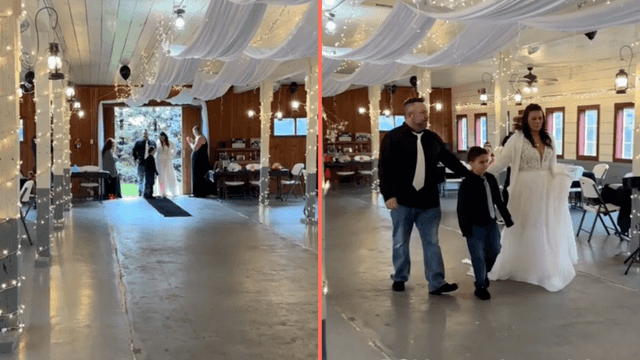It's been a long time coming, this.
Earlier this week, Nike's flagship store in London did us all a solid and introduced some diverse mannequins.
The mannequins were plus-size, modelling sportswear that curvier women can actually wear and, even more surprisingly, they
actually looked like real bodies.
Nike's move comes as part of a long line of top clothing brands making considerable efforts to ensure that their advertising does actually appeal to those of us who aren't a size 10 and under.
The likes of Boohoo, Nasty Gal, and ASOS have already jumped on similar ads, campaigns, and bouts of representation as they hire women who wouldn't fit the so-called norm for what was once considered to be beautiful in the fashion industry.
These campaigns are important. They're representative of groups that have long been forgotten by the fashion and beauty industry and, maybe more importantly, they're real.
And growing up, the likes of this
definitely would have been appreciated.
https://twitter.com/CNN/status/1136814400269094912
When I was younger I would watch TV just hoping to catch a glimpse of a woman who was breathtakingly stunning - but also happened to be carrying a bit of weight around her stomach.
I'd go shopping with my mam and becoming increasingly frustrated trying on clothes because I didn't look like the girls in the shop window. I'd look at the dresses on mannequins and want to give them a go, but be safe in the knowledge that they absolutely would not look the same on me.
Don't get me wrong, this lack of curvy representation growing up didn't destroy me. I trundled along pretty much alright until the my early 20s when I realised that being hot as fuck
and having massive thighs weren't mutually exclusive.
But there was always an absence, and it was noticeable.

Just 10 years ago, it was rare to see any sort of body type that wasn't completely slim being portrayed as beautiful, inspirational, or the ideal.
A lot of the time, the only representations of bigger bodies came in the form of crude red circles drawn around stomach fat in in
Heat magazine, or women on telly desperately trying to hide their curves because they knew that in order to be successful, you more than likely had to be skinny.
In 2008, there was quiet uproar when P!nk appeared in the music video for 'So What?' daring to wear a crop top while not having an entirely flat stomach.
Stills of the video were screenshotted by magazines and entertainment websites, highlighting the small bit of flesh that happened to be resting just above her waistline.
At the time, it was somehow scandalous that a global superstar like P!nk would give so little shits about what people thought of her body. Nowadays, it's the norm.

Being exposed to a variety of body types from a young age has an effect. A positive one, at that.
I don't doubt that the likes of Nike's plus-size mannequins would have made me feel far more comfortable in my own skin growing up.
They would have made a massive difference to my self confidence, my sense of self-worth, and my fears about not being anywhere close to the skinniest girl in school.
Teenagers today have enough to be feeling anxious about with the constant prevalence of social media making it increasingly difficult to not always be 'on', but at least with that prevalence comes a little more representation, diversity and acceptance.
Things that certainly wouldn't have gone amiss 10 years ago.



 Just 10 years ago, it was rare to see any sort of body type that wasn't completely slim being portrayed as beautiful, inspirational, or the ideal.
A lot of the time, the only representations of bigger bodies came in the form of crude red circles drawn around stomach fat in in Heat magazine, or women on telly desperately trying to hide their curves because they knew that in order to be successful, you more than likely had to be skinny.
In 2008, there was quiet uproar when P!nk appeared in the music video for 'So What?' daring to wear a crop top while not having an entirely flat stomach.
Stills of the video were screenshotted by magazines and entertainment websites, highlighting the small bit of flesh that happened to be resting just above her waistline.
At the time, it was somehow scandalous that a global superstar like P!nk would give so little shits about what people thought of her body. Nowadays, it's the norm.
Just 10 years ago, it was rare to see any sort of body type that wasn't completely slim being portrayed as beautiful, inspirational, or the ideal.
A lot of the time, the only representations of bigger bodies came in the form of crude red circles drawn around stomach fat in in Heat magazine, or women on telly desperately trying to hide their curves because they knew that in order to be successful, you more than likely had to be skinny.
In 2008, there was quiet uproar when P!nk appeared in the music video for 'So What?' daring to wear a crop top while not having an entirely flat stomach.
Stills of the video were screenshotted by magazines and entertainment websites, highlighting the small bit of flesh that happened to be resting just above her waistline.
At the time, it was somehow scandalous that a global superstar like P!nk would give so little shits about what people thought of her body. Nowadays, it's the norm.
 Being exposed to a variety of body types from a young age has an effect. A positive one, at that.
I don't doubt that the likes of Nike's plus-size mannequins would have made me feel far more comfortable in my own skin growing up.
They would have made a massive difference to my self confidence, my sense of self-worth, and my fears about not being anywhere close to the skinniest girl in school.
Teenagers today have enough to be feeling anxious about with the constant prevalence of social media making it increasingly difficult to not always be 'on', but at least with that prevalence comes a little more representation, diversity and acceptance.
Things that certainly wouldn't have gone amiss 10 years ago.
Being exposed to a variety of body types from a young age has an effect. A positive one, at that.
I don't doubt that the likes of Nike's plus-size mannequins would have made me feel far more comfortable in my own skin growing up.
They would have made a massive difference to my self confidence, my sense of self-worth, and my fears about not being anywhere close to the skinniest girl in school.
Teenagers today have enough to be feeling anxious about with the constant prevalence of social media making it increasingly difficult to not always be 'on', but at least with that prevalence comes a little more representation, diversity and acceptance.
Things that certainly wouldn't have gone amiss 10 years ago.









